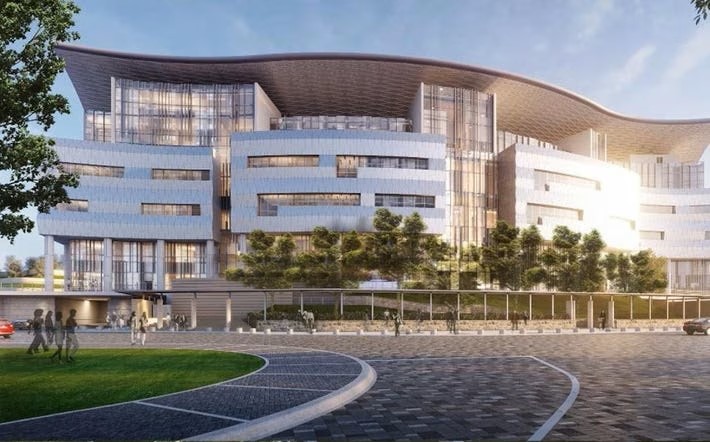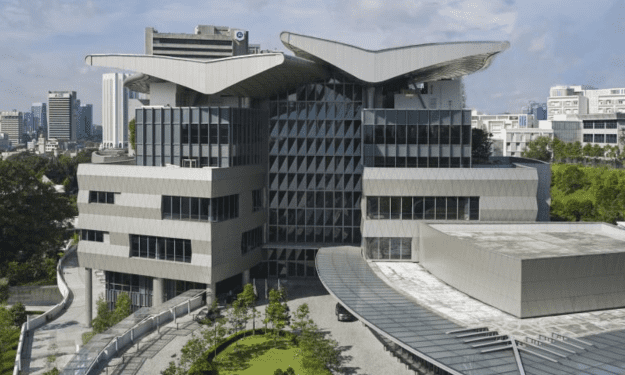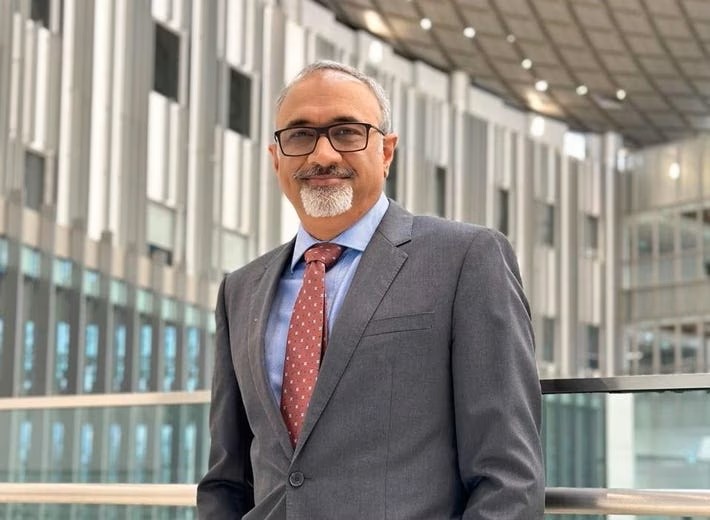“I think ASB is pretty magical. To bring MIT Sloan and the best qualities of a Western business school and a leading Asian school together within one MBA is really marvellous.” Sanjay Sarma – President, CEO and Dean of Asia School of Business (ASB) “One of the most creative thinkers I know.” The words of Rafael Reif, President of MIT for ten years until December 2022 described Sanjay Sarma, who for nearly a decade had run MIT’s digital learning platforms and education initiatives.
He continued, “For all he has done for our community, for his indelible mark on open learning, locally and globally, and for his continued commitment to inventing the future of education, I express to him my deep gratitude and admiration.” Sanjay Sarma, the incoming President, CEO and Dean of Asia School of Business (ASB), based in Kuala Lumpur has what he describes as an unconventional background.
“I’m a professor of engineering, I was vice president of MIT for open learning, I’m a businessman, I’m an author, and I’m a father .” Disarmingly modest and thoughtful, Sarma doesn’t elaborate on the extent of his achievements. But under his watch at MIT, he conceived and then led the launch of the MicroMasters, a new type of credential that allows working professionals to pursue master’s-level courses online.
Nearly 2 million students have enrolled, and 5,000 learners have earned MIT MicroMasters credentials. The programs have been adopted by over 25 universities worldwide, with over 50 programs offered. He also began entrepreneurship courses and bootcamps attended by hundreds of entrepreneurs, a content library to help professionals keep pace with the latest advances in technology, digital academic credentials, and led the creation of MITx Online, which hosts many of MIT’s online courses and has reached close to 10 million registrations.
With a bachelor’s degree from a prestigious IIT, followed by a Masters from Carnegie Mellon and his PhD from UC Berkeley, Sanjay Sarma initially worked in industry, and during his award-winning teaching career he has been involved in an IPO, developed key technologies behind Radio Frequency standards, and sits on the board of numerous companies.
In his books, Sarma has explored the structural, pedagogical and technological approaches to rethink our approach to learning and education, and understand methods that lead to the most meaningful and lasting impact “It’s been quite a journey,” he quietly concludes. So where next for such an accomplished and unassuming creative thinker? Taking on the leadership of Asia School of Business made perfect sense.
The school was founded in collaboration with MIT Sloan and the Central Bank of Malaysia. Students benefit from a teaching approach that Poets&Quants describes as “experiential learning on steroids.” MIT Sloan’s world-renowned faculty teach 50% of the one-year MBA curriculum in the vibrant cultural melting pot of Malaysia alongside ASB faculty, and students spend up to 3-weeks immersion at MIT Sloan in Cambridge, MA.
These courses are some of the most sought-after at MIT, covering subjects from Bill Aulet’s 24-step program in Disciplined Entrepreneurship to Nelson Repenning’s unique System Dynamics framework. Upon completion of the ASB MBA program, students will earn an MIT Sloan Certificate of Completion, receive affiliate MIT Sloan alumni status.
They can extend their learning opportunities by applying to study at MIT in the Visiting Fellows Program or apply to enroll in the nine-month STEM-designated MS in Management Studies from MIT Sloan, providing international students with work authorization in the U.S. for up to three years. At less than $35,000 in tuition fees for an intensive 12-month MBA program, you’re getting an M7 experience with outstanding ROI.
And Sanjay Sarma has hit the ground running, drawing on his experience to create what he describes as the post-GPT MBA. “We are living in strange times” he notes. Acknowledging that education as we know it has changed drastically in recent years, not just through the pandemic but also in terms of AI and how fast technology is developing. He believes that the MBA and education itself need to adapt and move with the times.

“For students to really get the most out of their[-]MBA education, the classroom should be flipped. The classroom is becoming a studio.” Sanjay Sarma – CEO, President and Dean Asia School of Business (ASB) “In a post-GPT world, the software and automated systems are capable of doing pretty damn well. It is human instinct that remains special.” He explains that classroom learning needs to be revolutionized.
He believes that lectures in their current format are no longer the best way for students to learn. “Even the word lecture has a negative connotation”, he says. “Does anyone else recall being ‘lectured’ as a child?” The ten years running MIT’s digital learning platforms is front of mind, with a strong emphasis on action learning that is a hallmark at the Sloan School of Management. “For students to really get the most out of their MBA education, the classroom should be flipped.”
“The term is embodied cognition, where your intuition aligns with your learning as opposed to having to second guess your instincts all the time.” ASB plans to deploy video and AI to reinforce the deep learning, and using the MBA classroom time to then discuss what they are learning. “It is more than just reciting information learned off by heart, the classroom is becoming a studio.”
The ASB approach to learning draws from MIT’s motto (mind and hand), and heavily focuses on classroom rigor combined with onsite Action Learning experiences throughout Asia. Sarma insists that in order for business schools and MBAs to remain strong, they should direct their focus to research and thought leadership. “At ASB we are fortunate to have excellent researchers in areas such as finance, social science, economics, political economy, supply chain and more, and therefore we have wonderful thought leadership going on in our community.”
“We have to teach with the workplace in mind,” he explains, “and ensure that MBA students have a great depth of knowledge not only in theory, but in the practical elements of their work too, so they can hit the ground running.” The MBA has been identified as one of the hottest in Asia, and the innovative approach to learning is one of the many reasons why.
Sanjay notes that their attitude towards learning is to see innovation and entrepreneurship as a form of thinking. It is consistent with his belief that an individual needs to become the CEO of ones life. “You need to have a vision for your life, and plan accordingly. In the absence of that, decisions become triply hard. The Financial Times identified South East Asia as offering the highest % salary increase for MBAs, so the decision to study at ASB in the world’s fastest-growing region by GDP, with a wealth of post-MBA career opportunities is compelling.”
Students can extend their stay at ASB for up to 4 months as a Scholar / Entrepreneur-in-Residence, and the school will provide office space for their entrepreneurial venture in the ASBeehive, or provide them with the opportunity to work with a professor in one of our research centers. With this mindset, the sky truly is the limit for ASB and their students alike.
Sarma describes the ties with MIT Sloan like, “having their cake but eating it too”. He explains that he wants to bring the two cultures together – the differing perspectives from the South East Asian and Western perspectives, combining them to provide students with an in-depth level of entrepreneurial learning in Asia’s dynamic business environment. “Malaysia is the perfect gateway to Asia and beyond.
It is a cultural melting pot which includes three of Asia’s oldest civilizations, in the heart of South East Asia and its population of over 600 million. Kuala Lumpur is a dynamic economic hub in the region, and serves as the ideal hub for our students to experience Asia through our Action Learning projects.”

The FT identified SE Asia as offering the highest[-]% salary increase for MBAs, so the decision to study at ASB in the world’s fastest-growing region by GDP, with a wealth of post-MBA career opportunities is compelling.” Sanjay Sarma – President, CEO and Dean of Asia School of Business (ASB) In an unlikely comparison, he relates the partnership to apps that are used in Malaysia to order a taxi.
The app will translate the driver’s text in their language to the first language of the passenger when they are messaging to arrange a pickup, making it a much easier experience for all involved. He compares this to the blend of teaching from MIT Sloan and ASB, saying that a nuance it is to have technology adapting to everyone, and being understanding of the needs of each individual.
“I think it can be pretty magical. We have teachers here who will look at each perspective. This idea that the best qualities of a Western school and an Asian school could be brought together within one MBA is really marvellous. Students get to experience life in ASB’s home, Kuala Lumpur, for most of their MBA, with the last three weeks taking place in MIT. This opens them up to new cultures and experiences, and a wide variety of new people to get to know.”
The one-year format is proving popular. In the Graduate Management Admission Council’s annual Prospective Students Survey, a majority of business school candidates said that they prefer one-year MBA programs over the two-year options more popular in the U.S. “The price of the Asia Business School MBA is far less than that of the other leading programs in Asia, coming in at $35k, and the return on investment is substantial.
But we are not sacrificing the quality of the experience. – we are getting as much information across to students as humanly possible.” With the timeline and attractive tuition, Sanjay Sarma likens the experience to getting 50lbs into a 15lb bag. “Between the hands-on knowledge, the networking and career opportunities, and the potential opportunity to study somewhere new, the MBA at ASB is a quantum leap opportunity worth grabbing with both hands.”
Originally published by Forbes.





